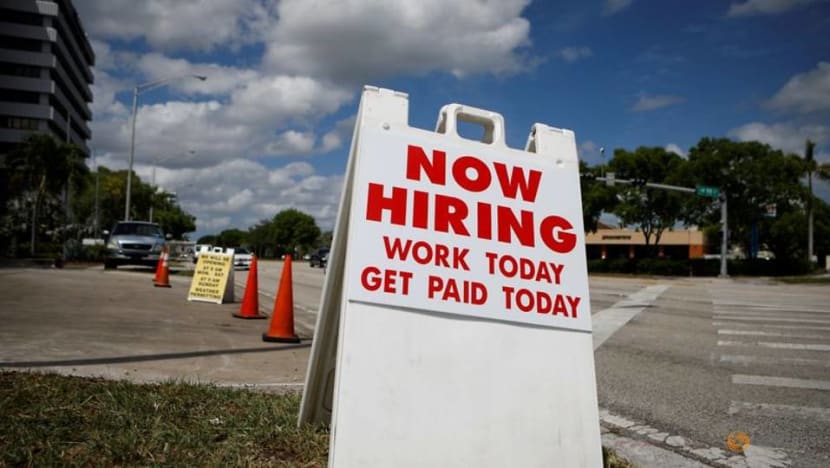US unemployment rate drops to 6.3% in January

A "Now Hiring" sign advertising jobs at a hand car wash is seen along a street, as the spread of the coronavirus disease (COVID-19) continues, in Miami, Florida, US, on May 8, 2020. (Photo: REUTERS/Marco Bello)
WASHINGTON: The US unemployment rate dropped to 6.3 per cent in January but the economy added only 49,000 jobs as the COVID-19 pandemic continued to hamper business, the Labor Department said on Friday (Feb 5).
The January increase came after the world's largest economy saw a contraction in hiring in December, but the government noted that continued job losses in sectors such as leisure and hospitality, retail trade, health care and transportation undermined the gains.
Data for December was revised to show 227,000 jobs lost instead of 140,000 as previously reported.
December's drop was the first in eight months and came amid renewed restrictions on businesses like restaurants and bars to slow a resurgence in coronavirus infections.
The unemployment rate for January fell sharply from 6.7 per cent to 6.3 per cent, the Labor Department said. About half the drop occurred because some of those out of work found jobs, while others stopped looking for work and were no longer counted as unemployed.
READ: US economy shrank 3.5% in 2020 after growing 4% last quarter
Friday's figures reflect a faltering job market, slowed by a viral pandemic that is still causing consumers to avoid travelling, shopping, dining out, attending entertainment venues and engaging in other forms of face-to-face contact. Nearly 10 million jobs remain lost to the pandemic.
Some states and localities re-imposed restrictions on businesses in December as cases spiked. Some of those restrictions were loosened in January, though perhaps not in time to affect the jobs report, which measures employment in the middle of each month.
As hiring has slowed, many employers have continued to lay off workers. The number of applications for unemployment benefits, though declining for the past few weeks, remained at an elevated 779,000 last week.
The hardships that millions of Americans are suffering trends have fuelled President Joe Biden’s push for a US$1.9 trillion stimulus package, which would provide US$1,400 checks for most US individuals and a US$400 weekly unemployment payment on top of state benefits. The package would also extend two federal jobless aid programmes, from mid-March through September.
The damage to the job market since March has widened financial inequality in the United States, especially hurting women and people of colour.
At the same time, Americans fortunate enough to have kept their jobs have amassed US$2.3 trillion in savings — double the pre-pandemic total. That enlarged pool of savings could fuel a rapid rebound in spending as business restrictions are lifted and more Americans become more confident about shopping, dining out and travelling.
READ: Commentary - Joe Biden’s economic plan is welcome medicine that bridges divide
Economists increasingly suggest that as vaccinations reach a critical mass in the coming months and the government provides further stimulus, the economy and the job market will strengthen much faster than they did after previous recessions.
Some hopeful signs have emerged recently to suggest that the economy might be picking up a bit.
Auto sales rose solidly in January. And a gauge of business growth in the service sector picked up to its highest level in two years. It also showed that services firms added workers last month. A separate measure of manufacturing indicated that factories are also expanding. So is spending on home construction.














